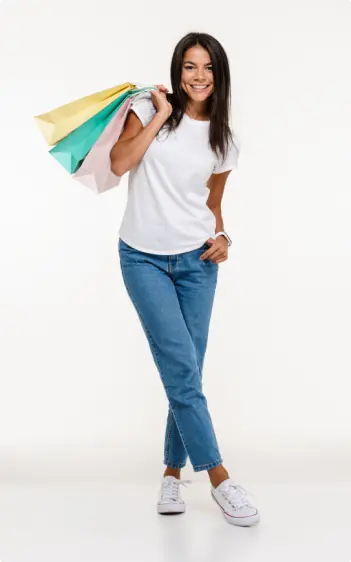Sustainable fashion isn’t just limited to buying from conscious brands, it’s also about learning to extending the life of the things you own. There are about 21 billion pounds of clothing and textiles in landfills right now, or 70 pounds per person. 95% of which could be used to make new products right now. Clothes swapping, shopping second hand, and thrifting are all ways to fulfil the want for something new, without incurring more waste – and the process of looking in your own closet to decide what you want to swap also helps bring insight into the things you want to keep and wear.
Myth #1: It is unhygienic
Reality: The concern of hygiene is often the first thing holding people back from buying second hand. Places that support these forms of slow fashion (thrifting, swapping, pre-loved items) already have policies in place to ensure their wearability. Take The Fashion Pulpit for example, a permanent brick-and-mortar swapping fashion space, they ask their members to launder their items before passing them along, clothes are then steamed and disinfected with essential oil.
Here’s something you might not have known before. That “new” smell you’re used to is actually a mixture of finishing treatments like urea resins and formaldehyde (one word: toxic). These are used primarily in construction and even to preserve bodies. The intention behind using them on clothing is that they prevent mildew, wrinkling and parasites – all of which are likely to occur during shipping.
We’re so conditioned to believe that new clothes are cleaner than second hand clothes, when in actuality the former contains higher levels of chemicals. Second hand clothes have already been worn and loved, which means they’ve had the time to get rid of these substances with every wearing.
Myth #2: Everything is out of style
Reality: Trends are the bread and butter of the current fashion industry; a proponent towards the rat race system, and simultaneously its downfall. Second hand clothing is usually from a few seasons back, but if there’s one thing true about fashion it’s that trends follow a cycle and they’ll always come back in style.
If you’re subscribed to the camp that stands for slow fashion, then you’re likely already familiar with the value of loving what you have and buying timeless pieces. It begins with a shift in the way we see clothing, the clothes we wear should be made to last – regardless of what is on trend at the time.
Myth #3: The clothes are in poor quality
Reality: Contrary to popular opinion, second hand clothes have already stood through the test of time after repeats of washing and drying. Stores accepting pre-loved clothing, like Swapaholic, take them in only if they’re in good condition, taking care of this concern for you. Items that come into swapping platforms are inspected for quality and care. As our friends at Fashion Revolution said, shopping second hand loosens the grip of advertising and corporations on shaping our style and identity, and can reconnect us to the joy of wearing clothes and passing them on.
Myth #4: There are no high-end luxury options available
Reality: The circle of second hand brands is expanding and there are more variations within this umbrella, those of which include luxury and branded goods. The kind you see on fashion runways, in magazines, and over your feed. All grounded on the pillar that luxury consumer experience isn’t just about buying designer items, but also reconsigning them, sharing them with someone who will treasure them as much as you do. They also have authentication experts, horologists and gemologists to ensure every item is the real thing.
Buying second hand layers a connection to our clothing and requires us to ask why we own the things we own. Ethical fashion is all about investment pieces, choosing styles that you will wear in the years to come, but that often means a higher increase in prices. Buying second hand is the alternative of that that’s just as sustainable. Globally 20% of textiles are recycled, meaning the other 80% are lost to landfill. Less than 1% of collected clothing is truly recycled into fresh textiles. Shopping second hand continues the life of a clothing, and it’s a way to practice sustainability by caring for clothing that would otherwise go to the landfill.

 English
English
 عربي
عربي
